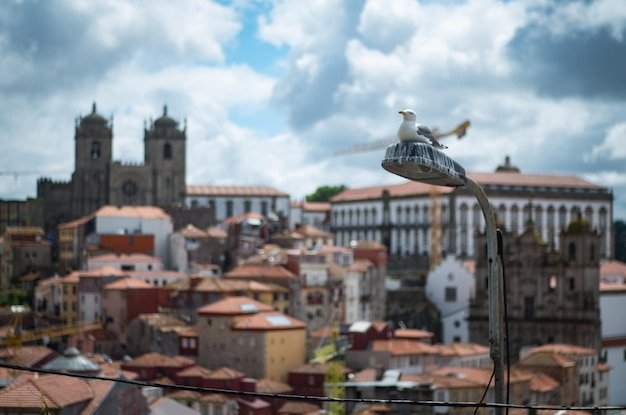
Quito, Ecuador: A Showcase of Stunning Architectural Design
The American magazine Condé Nast Traveler has recognized Quito as one of the world’s 24 best places to visit in 2024, thanks to its splendid hotels, fine dining, vibrant entertainment, and, most notably, its exceptional architecture.
Quito’s streets and avenues are alive with history. The city’s architecture is a fascinating blend that includes Indigenous, Spanish colonial, and modern influences—each structure tells a piece of Quito’s evolving story, from its pre-Columbian roots to its contemporary skyline.
To give prospective travelers a glimpse into this rich urban tapestry, let’s explore seven notable examples of Quito’s remarkable architectural design.
La Compañía Church: Quito’s Most Ornate Church
Located in Quito’s “Old Town,” a UNESCO World Heritage Site known to be the best-preserved historic center in Latin America, La Compañía Church stands out as one of the most exquisite examples of baroque architecture. With green-and-gold domes, its intricately carved façade showcases the fusion of Spanish, Italian, Moorish, Flemish, and Indigenous art. Inside, the church’s dimensions are vast, with a central nave vault 26 meters high and nearly every surface covered in 23-karat gold leaf. This Jesuit church, completed over 160 years, is proudly called the most beautiful in Ecuador by Quiteños.
Basílica de Voto Nacional: A Neo-Gothic Gem
Towering over the northeastern part of Quito’s Old Town, the Basilica de Voto Nacional is a stunning example of neo-Gothic architecture inspired by Notre Dame in Paris. Instead of gargoyles, the exterior features animals native to Ecuador and the Galapagos Islands. Climbing one of the 375-foot-high towers offers a breathtaking view of the city, particularly the Old Town. Inside, the basilica is decorated with carvings and sculptures that reflect Ecuador’s rich indigenous heritage.
Independence Square: Plaza Grande
Independence Square, or Plaza Grande, is a vital part of Quito’s daily life and national heritage. The square features a monument honoring the heroes of independence and is surrounded by significant architectural structures. The Palacio de Gobierno, or Carondelet Palace, serves as the seat of government. The Catedral Metropolitana, built in the 16th century, stands out with its gold altar and impressive arches. The Archbishop’s Palace, now housing restaurants and craft shops, adds to the square’s allure. Visitors can enjoy a leisurely Sunday exploring these historical treasures.
The Modernistic IQON Tower: Quito’s Tallest Structure
Quito is experiencing a building boom with high-rises designed by renowned architects. Among them is the 436-foot-tall IQON Tower, designed by Danish firm BIG. Completed in 2022, this mixed-use development features eight distinct volumes connected by lush terraces, embodying the earthy tones and patterns of Quito’s historic district. Another notable project from BIG, the “EPIQ,” is underway, promising further architectural innovation.
Monument to the Equator: Middle of the World City
Just 16 miles north of Quito’s center lies the Middle of the World City, home to the Monument to the Equator, built between 1979 and 1982. Although GPS technology has shown the monument is slightly south of the true equator, it remains a popular tourist attraction. The trapezoidal structure, topped with a large brass globe, includes an exterior viewing platform and the Middle of the Earth Ethnographic Museum, which offers insights into Ecuador’s diverse indigenous cultures.
El Panecillo Statue: Quito’s Winged Guardian
Perched atop El Panecillo hill, the Virgin of Quito statue offers panoramic views over “Volcano Avenue” and one of South America’s best-preserved historic districts. Standing at 135 feet, it is Ecuador’s tallest statue and the tallest aluminum sculpture globally. Legends speak of a treasure hidden beneath, guarded by ancient spirits and the winged Virgin.
The San Francisco Church: A Baroque Masterpiece
Quito’s historic district, a UNESCO World Heritage Site, is filled with colonial-era plazas and 17th-century churches like the San Francisco Church & Monastery. This baroque marvel, adorned in gold leaf, took almost 150 years to complete. The complex includes numerous cloisters, chapels, a museum with 3,500 works, courtyards, patios, and even a soccer field and old-fashioned brewery. It remains a significant religious center, though the number of monks has dwindled over time.
Discover Quito’s Architectural Diversity
Today, Quito seamlessly blends its past and present. Modern structures like the IQON Tower stand alongside centuries-old churches, while new developments such as the Quito Metro integrate contemporary design into the city’s historic fabric. Quito’s unique architecture, showcasing a mix of Indigenous, Spanish colonial, and modern influences, makes it a must-visit destination for those interested in both historical and cutting-edge architectural styles.
